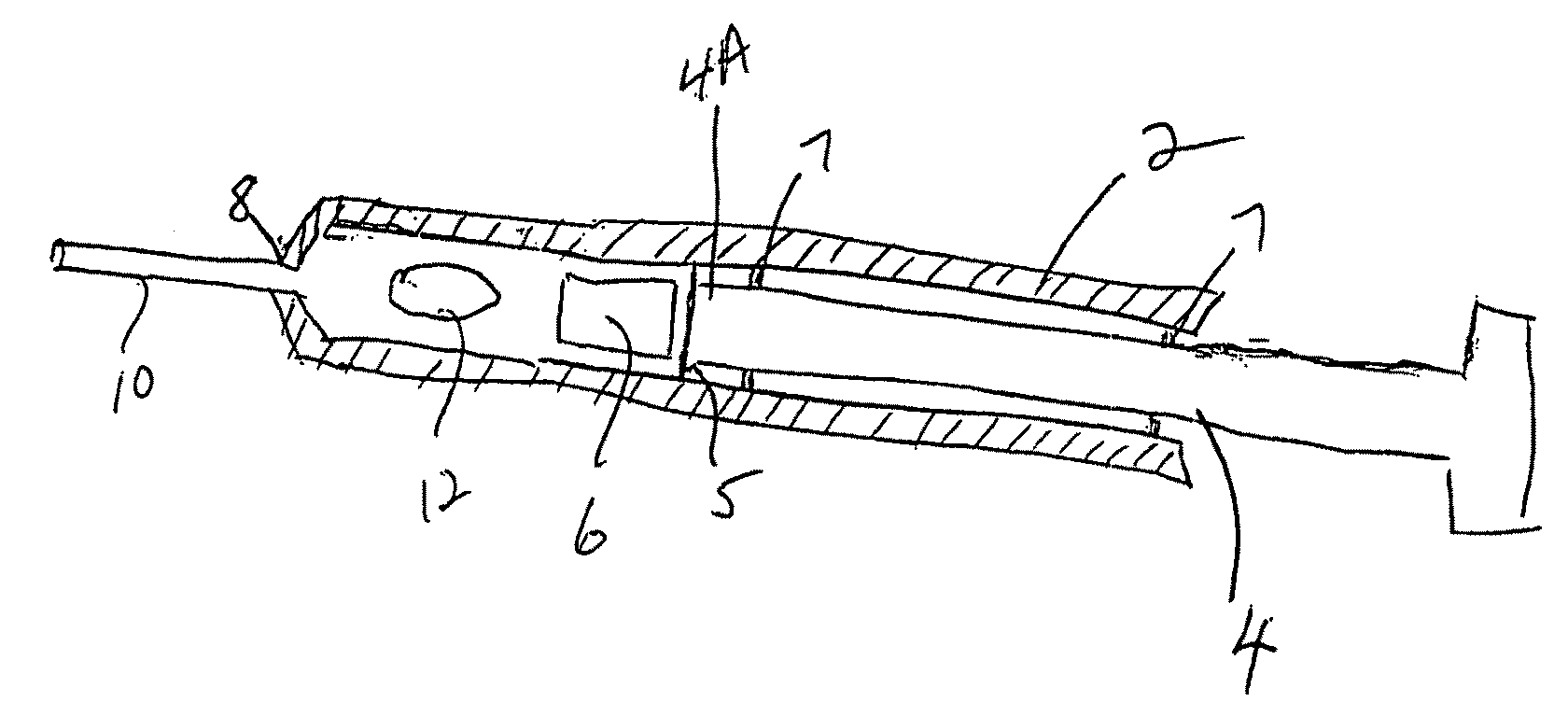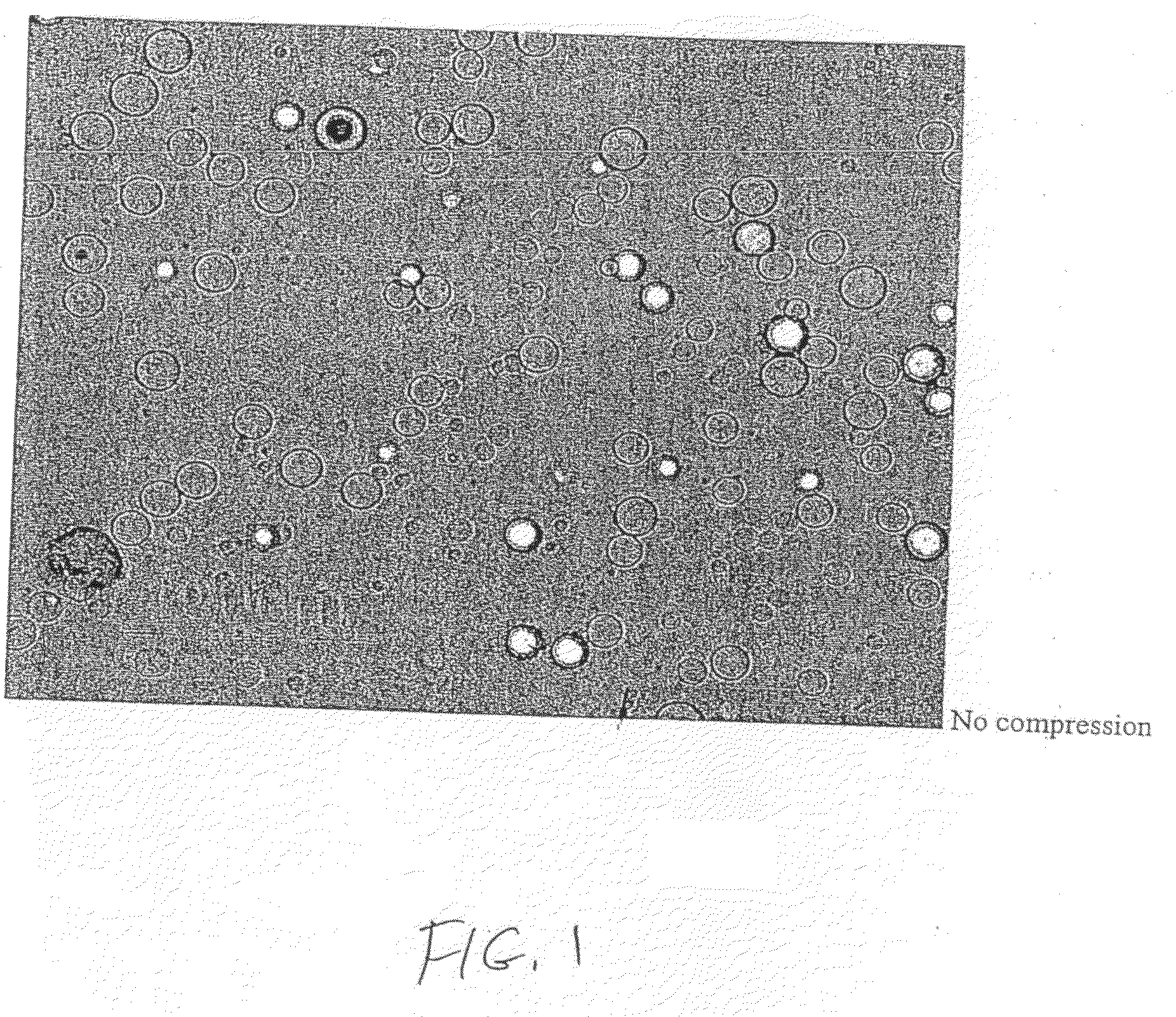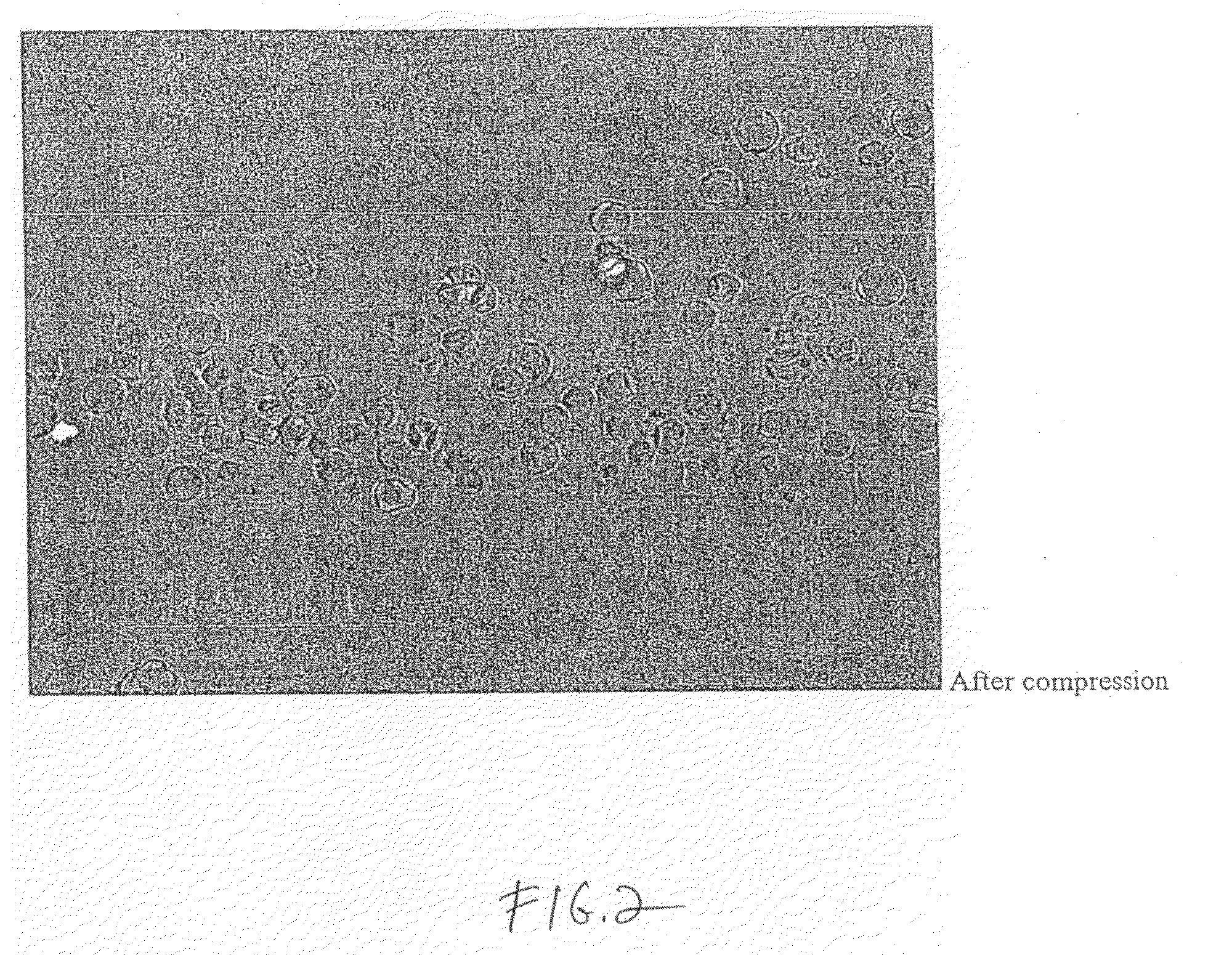Controlled release implantable dispensing device and method
a technology of implantable drugs and dispensing devices, which is applied in the direction of prosthesis, biochemistry apparatus and processes, peptide/protein ingredients, etc., can solve the problems of systemically administered medications having undesirable effects, complicated treatment of various conditions, and complicated treatment of pharmaceuticals, etc., to achieve greater dose range, simple use, and greater density per unit size
- Summary
- Abstract
- Description
- Claims
- Application Information
AI Technical Summary
Benefits of technology
Problems solved by technology
Method used
Image
Examples
example 1
[0100]A dosage formulation of dexamethasone as a compressed microcapsule formulation is prepared by dispersing 325 mg of dexamethasone in 5 g of a poly(dl-lactide) polymer (PLA) (intrinsic viscosity 0.66-0.80 dl / g as measured in a Ubbeholde viscometer by assessing the flow time of polymer solutions; PLA is soluble in acetone, chloroform or dichloromethane) dissolved in 125 ml of chloroform and 3.5 ml of ethanol. The suspension is agitated between 1500 to 2000 RPM with 700 ml of a 2% polyvinyl alcohol (30 K to 70 K MW) maintained at 4° C. After 6 hours of stirring, the agitating speed is reduced to 700 RPM and chloroform is allowed to evaporate over night. The microspheres formed are recovered by centrifugation at 1500 RPM, washed 3 times with water and lyophilized. The microspheres form a free flowing powder having 6.5 wt % of dexamethasone with the microspheres having a general diameter in the range of 5 to 25 microns. Thereafter, 250 mg of the microspheres are placed in 7.87 mm di...
example 2
[0102]A cylindrical shaped dosage form is made using dexamethasone and the polymer system was prepared as described above. The dosage form measures 7.87 mm in diameter, has a thickness of 1 mm, a weight of 60 mg and a drug loading of 6.5%. The same 7.87 mm diameter mold was filled with 60 mg of DSP Dexamethasone, with a comparable incremental pressurization approach was used by applying a compression pressure of 211,685 psi. The dosage form is placed beneath the conjunctiva in the super temporal quadrant of the eyes of five pigs. The level of dexamethasone in the aqueous humor and the vitreous humor is determined at 0.25 day, 1 day, 3 days, 7 days and 14 days by sampling and analyzing the vitreous humor and the aqueous humor. The concentrations of dexamethasone are reported in FIG. 3.
[0103]The release profile shown in FIG. 3 shows that the 211,685 psi of forces disc provided sustained release of dexamethasone for the entire 14 days of the study. Tests of plasma found no detectable d...
example 3
[0104]A study was performed to assess the effects of longer term implantation of cylindrical pellets compressed at 301,568 psi, measuring 5mm length×3 mm diameter, in rabbit ocular tissues. A new 3-mm diameter mold (prepared and adapted to fit / interchange with the supporting hardware of the 7.87 mm diameter mold) was utilized to prepare the smaller pellets required for the rabbit eye. Due to dimensional considerations and the need to reconcile with the pressure applied for preparing the pellets and the mechanical tolerance of the mold, the incremental pressurization approach, described above was utilized, an initial pressure of 1000 lb was applied; thereafter, ˜500 lb of additional pressure was applied approximately every 5 minutes until it reached about 300,000 psi range. The height of the pellets (cylinders) produced were about 5 mm. The pressure noted was 301,568 psi. Similar to the pig model as described above, the pellets were implanted beneath the conjunctiva in the superotemp...
PUM
| Property | Measurement | Unit |
|---|---|---|
| thickness | aaaaa | aaaaa |
| thickness | aaaaa | aaaaa |
| size | aaaaa | aaaaa |
Abstract
Description
Claims
Application Information
 Login to View More
Login to View More - R&D
- Intellectual Property
- Life Sciences
- Materials
- Tech Scout
- Unparalleled Data Quality
- Higher Quality Content
- 60% Fewer Hallucinations
Browse by: Latest US Patents, China's latest patents, Technical Efficacy Thesaurus, Application Domain, Technology Topic, Popular Technical Reports.
© 2025 PatSnap. All rights reserved.Legal|Privacy policy|Modern Slavery Act Transparency Statement|Sitemap|About US| Contact US: help@patsnap.com



